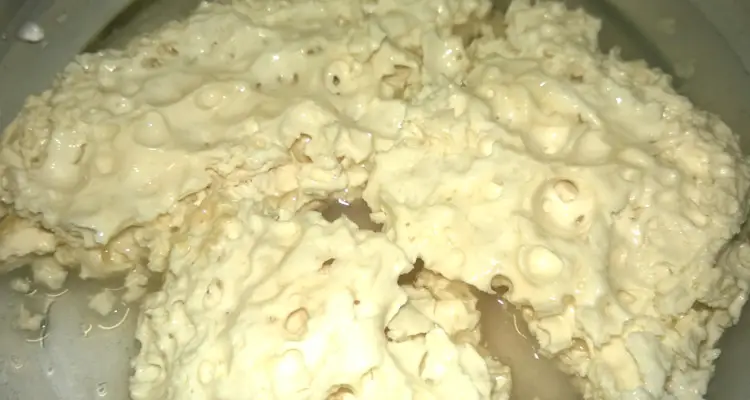Do you want a step-by-step process to make and use LAB in KNF? This guide is for you.
Lactic Acid Bacteria or LAB is an anaerobic microorganism used in Korean Natural Farming to improve the quality of fruits, vegetation as well as soil aeration.
It occurs naturally but possibly in lower numbers due to chemicals-based agricultural practices.
In this article, you’ll learn how to make LAB and use it to grow healthier plants and livestock.
Before We Dive In
Here is a list of the ingredients and materials you need to make LAB.
| Items | Details |
| Rice | 1 Cup or 250 ml |
| Water | 1 Cup or 250 ml |
| Milk | 3 Cups or 750 ml |
| Plastic or Glass Jar | 1 Liter |
| Porous Paper | 1 Sheet Tissue Paper |
| Rubber Band | String |
| Measuring Cup | Standard and Metric |
Optional: A spray can or water can to apply the solution.
You most likely already have these items at your home.
So, let’s get started.
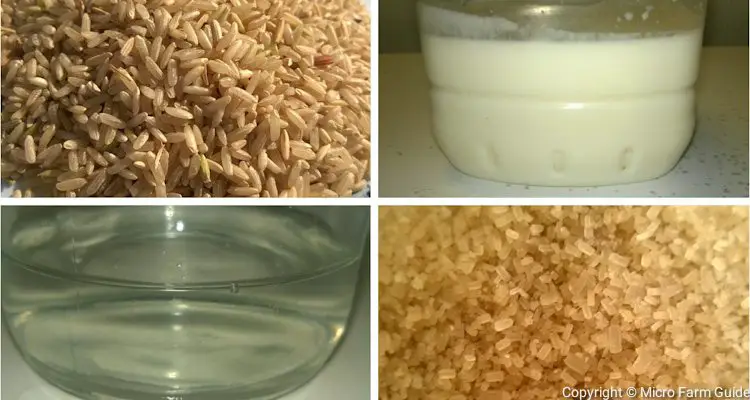
5 Steps To Make LAB in KNF
To make the LAB solution, you are not making the bacteria.
In reality, you are first going to attract then provide a suitable environment to allow it to multiply rapidly.
Follow this simple process to culture Lactic Acid Bacteria (Lactobacillus) using milk.
- Collect Water From Washed Rice
- Propagate Lactic Acid Bacteria
- Add Rice Water Starter To Milk
- Cultivate Lactic Acid Bacteria
- Separate And Store LAB
1. Collect Water From Washed Rice
Use little water as you can to wash the rice to make a thick, white liquid.
- Pour the rice into a small container.
- Add water until it covers the rice.
- Using a spoon, stir the rice for a few minutes. The water will turn creamy white.
- Pour this rice-washed water into the jar.
- Add the remainder of water to the rice and stir. This solution should be thinner than the first.
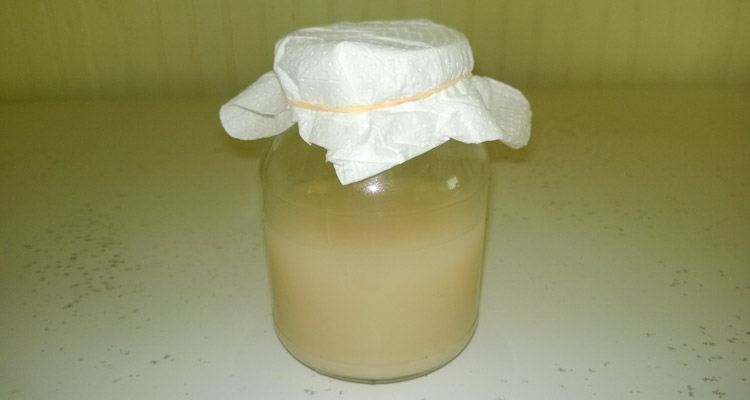
2. Propagate Starter Lactic Acid Bacteria
Add the remainder of rice-washed water into the jar. The total should be about 1 cup.
- Cover the jar with a sheet of porous paper.
- Secure the paper in place with a rubber band or a string.
- Place in a cool dark area until it starts to smell sour.
This process can take between 24 to 48 hours, depending on the temperature of the room.
In some cases, the liquid will start to make bubbles or form a thin layer of debris at the top.
Your rice water starter is ready!
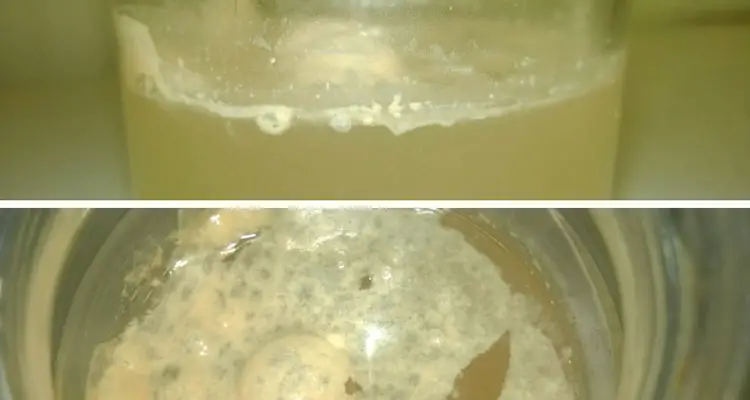
3. Add Rice Water Starter To Milk
Ideally, you want to a ratio of 3 parts milk to 1 part of rice water starter.
- Add 3 cups of milk to the jar containing the rice water starter.
- Cover with tissue paper.
- Secure the sheet of paper in place with a rubber band or a string.
- Place in a cool, dark, dry area.
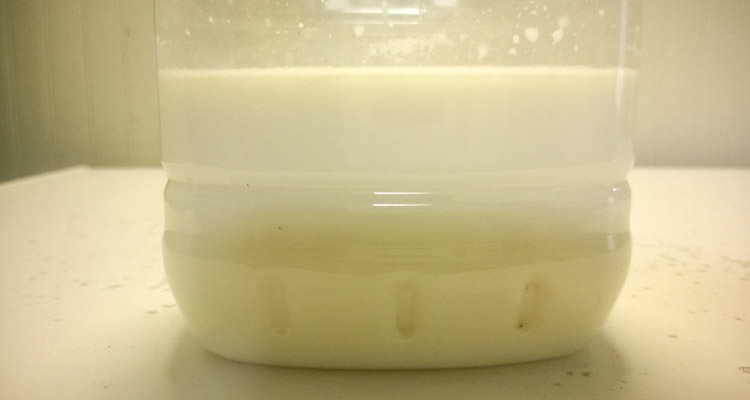
4. Cultivate Lactic Acid Bacteria
Initially, the rice water attracts the Lactobacillus, which then starts to multiply.
After adding the milk, these microorganisms multiply rapidly, feeding on the abundance of nutrients.
The process can take up to 5 days in low temperatures. However, in my area, the solution is ready in 2 to 3 days.
By the end of the process, the solution separates into three distinct layers: a top floating layer, a middle liquid layer, and a layer of sediments at the bottom of the jar.
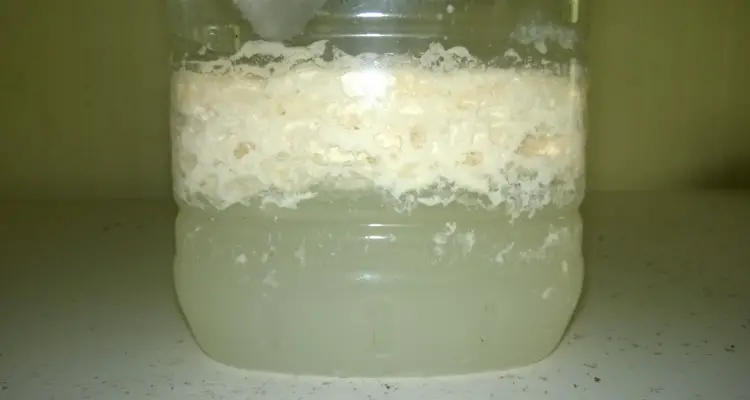
5. Separate And Store LAB
Now that the layers are clearly defined, it is time to separate them.
- Using a spoon, scoop out the top creamy layer. You can use it to make cheese or feed it to chickens.
- Carefully pour the liquid into a bottle and label.
You can store LAB in a refrigerator for an extended period.
However, you’ll need to add an equal amount of brown sugar to the LAB solution if you intend to store it at room temperature.
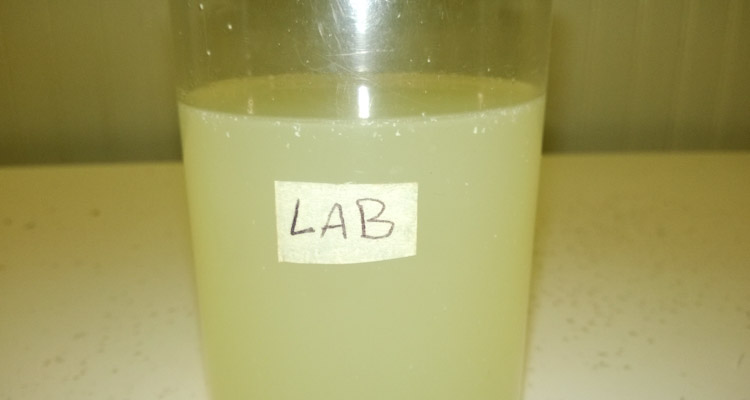
How To Use Lactic Acid Bacteria In KNF
When it comes to Lactic Acid Bacteria, a little goes a long way.
The solution you obtain from culturing Lactobacillus is highly concentrated and biologically active.
As a result, you will need to dilute LAB before using it.
For general application, KNF recommends a ratio of 1:1000. In other words, 1 ml LAB to 1 Liter Water.
However, you will need a more concentrated solution if you intend to use it to sanitize livestock housing.
You can use IMO in a ratio of 1:100 or 1:500 to spray the walls and litter of chicken coops.
For best results, use a spray can to apply LAB. However,
you can also use a watering can.
Note: The creamy byproduct of the LAB production, which floated to the top, can be fed to animals or further processed into cheese.
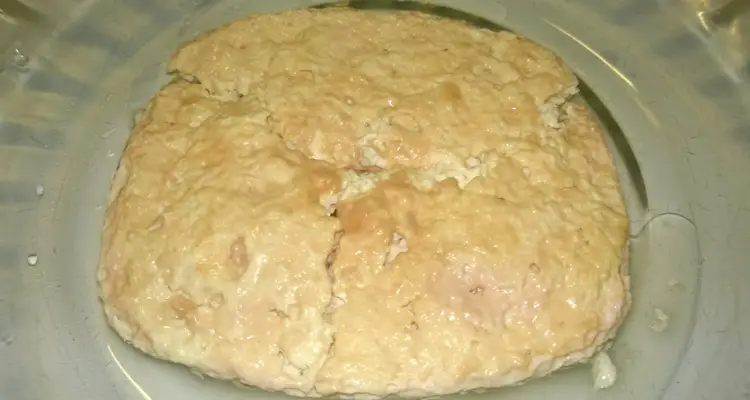
Benefits Of LAB In Natural Farming
Lactic Acid Bacteria have many applications in Natural Farming, ranging from soil improvement to digestion.
Let’s take a look at a few of these benefits.
Improves Soil Aeration And Mineral Accumulation
LAB improves ventilation and creates the environment necessary for plants to thrive while keeping fungi and other organisms in check.
Apply LAB to any soil whose quality is less than desirable.
The microorganisms feed on both organic and inorganic particles, creating pathways in the process.
It causes the soil to become fluffy, easy to cultivate.
This process takes time and repeated application. It helps to reverse issues resulting from extensive chemical usage.
Lactic Acid Bacteria reportedly improve the quality of soil that has accumulated phosphates or compacted.
Enhances Quality Of Crops
Apply LAB to the surface of plants in the early stages of vegetative growth to produce more robust plants with larger leaves and fruits that store longer.
As mentioned earlier, Lactobacillus is present on the surface of many plants. It helps protect the plant allowing it to grow healthy.
Unfortunately, it is not as prevalent as in the past, possibly due to chemical usage.
Assists In Livestock And Compost Management
Lactobacillus is conditionally anaerobic, meaning that it can function in the absence of oxygen when necessary.
This quality allows LAB to function in less than ideal conditions, such as in the stomach or compost.
LAB mixed with Fermented Plant Juice (FPJ) helps treat animals with digestive issues.
LAB speeds up the composting process, especially when added to IMO.
It is also an ingredient in the production of IMO-3. This farming input is a component of the KNF Chicken Housing system.
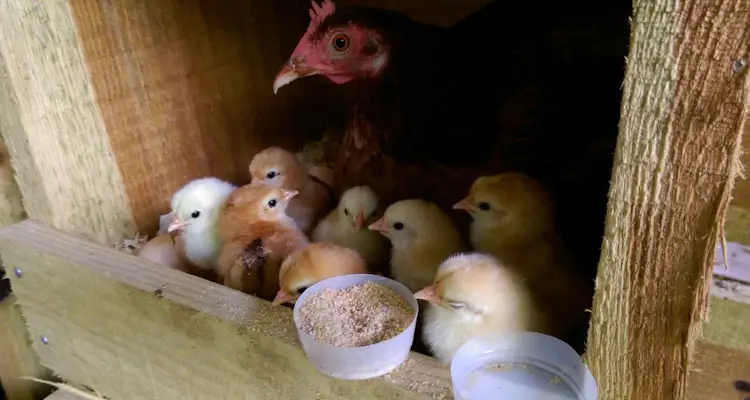
Lactic Acid Bacteria have sterilizing properties. You can use it to sanitize the chicken coop.
LAB neutralizes ammonia scent in the chicken coops and aids in the production of fermented compost.
Final Thoughts
Lactic Acid Bacteria assist in creating a suitable environment to grow healthy plants and animals in the Korean Natural Farming system.
Lactobacillus is easy to cultivate and stores well both at room temperature and in the refrigerator.
It is effective in the rehabilitation of poor soil, allowing plants to yield larger leaves and fruits.
While it is beneficial, you observe basic guidelines when using LAB for both plants and animals.
Ideally, LAB should be combined with complementary natural farming inputs, such as IMO and FPJ, to get the best results.
Related Questions
Why Is LAB Referred To As Conditionally Anaerobic?
Lactobacillus is said to be conditionally anaerobic because, unlike other anaerobic microbes, it can function in the presence of Oxygen. It is said to be aerotolerant.
References
Reddy, Ronhini. Cho’s Natural Farming. South Asian Rural Reconstruction Association. 2011 (PDF)

